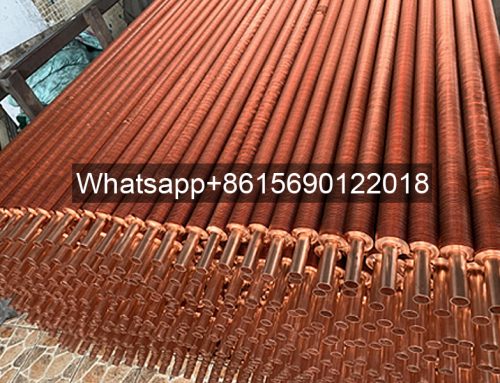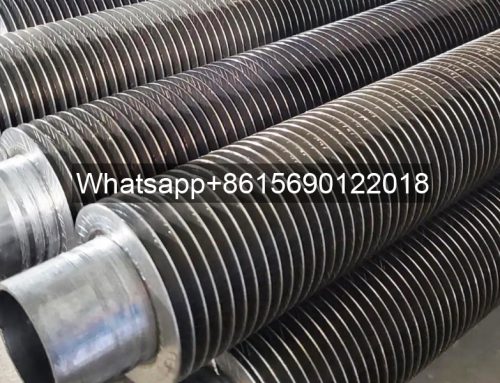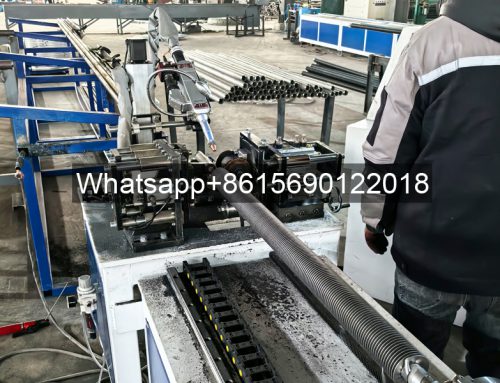Structural form of air cooled heat exchanger
Air cooled heat exchanger is a heat exchanger that uses air to cool hot fluid. The hot fluid in the tube exchanges heat with the air outside the tube through the tube wall and fins, and the air used is usually supplied by a ventilator.
Air cooled heat exchanger is referred to as air cooler. It uses air as a coolant and can be used as a cooler or a condenser. The air cooler is mainly composed of a tube bundle, a bracket and a fan.
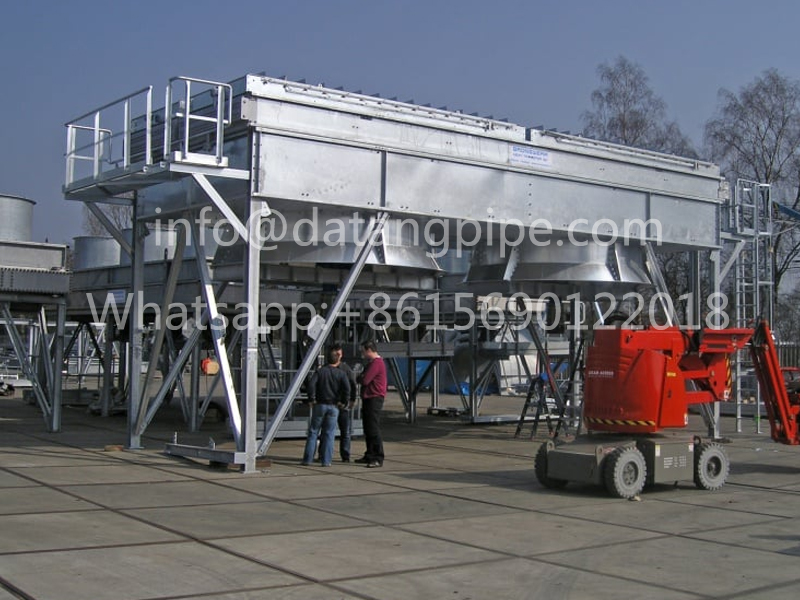
The hot fluid of the air cooler flows in the tube, and the air blows outside the tube bundle. Since the ventilation volume required for heat exchange is large and the wind pressure is not high, axial flow fans (see fluid conveying machinery) are mostly used. The type and material of the tube bundle have a great influence on the performance of the air cooler.
Since the heat transfer coefficient on the air side is very small, fins are often added to the outside of the tube to increase the heat transfer area and fluid turbulence and reduce thermal resistance. Most air coolers use radial fins.
Air coolers usually use light tubes with an outer diameter of 25mm, low-fin tubes with a fin height of 12.5mm, and high-fin tubes with a fin height of 16mm. The fins are generally made of materials with high thermal conductivity (most commonly aluminum), and are wound or embedded on the light tube. To enhance the heat transfer effect of the air cooler, water can be sprayed in the inlet air to increase humidity. This not only reduces the air temperature, but also increases the heat transfer coefficient.
The use of air coolers can save a lot of industrial water, reduce environmental pollution, and reduce infrastructure costs. Especially in water-scarce areas, replacing water cooling with air cooling can ease the contradiction of insufficient water sources.
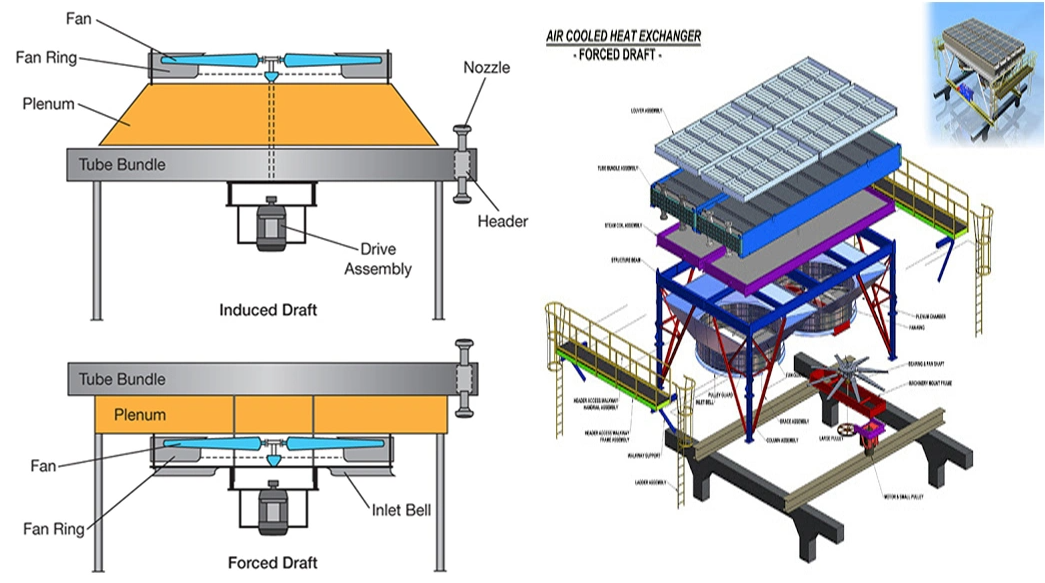
Air cooler structure
High-quality air coolers are mainly composed of three parts: tube bundles, fans and frames.
The tube bundle includes heat transfer tubes, tube boxes, side beams and cross beams.
It can be arranged in three basic forms: horizontal, vertical and inclined top (herringbone). Among them, the horizontal arrangement has a large heat transfer area, uniform air distribution and good heat transfer effect; when the inclined top is arranged, the fan is installed in the central space of the herringbone, which occupies a small area and has a compact structure.
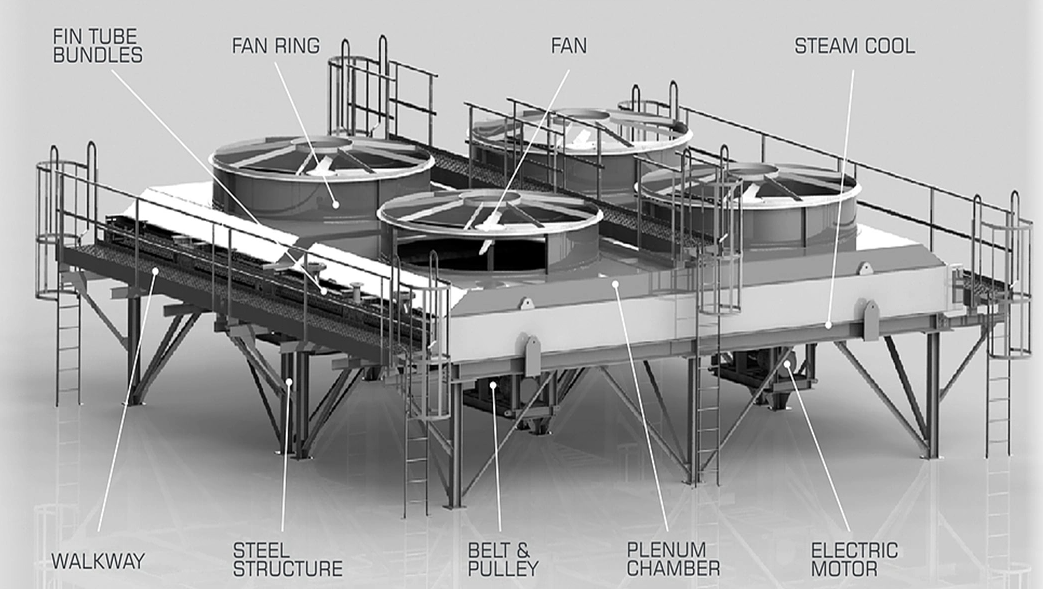
In order to offset the influence of the low heat transfer coefficient on the air side, tubes with fins on the outer wall of the light tube are usually used. Finned tubes are used as heat transfer tubes to expand the heat transfer area.
Finned tubes are arranged in layers, and their two ends are connected to the tube box by welding or expansion. The rows of tubes are generally 3 to 8 rows. The maximum length of the tube bundle series is 12 meters. The outer diameter of the light tube is usually 25 mm and 38 mm, the fin height is generally 12 to 15 mm, and the tube bundle width is 100 to 3000 mm.
Finned tubes are the core components of air coolers, and their form and material directly affect the performance of the equipment. The tubes can be made of carbon steel, copper, aluminum and stainless steel; the fin material is determined according to the use environment and manufacturing process. Most of them use industrial pure aluminum. Copper or stainless steel is also used when the anti-corrosion requirements are very high or the manufacturing process conditions are special. The fins can be arranged horizontally or vertically.
The basic forms of finned tubes are: winding type, inlay type, rolled type, sleeve type, welded type, elliptical tube type, turbulent type (including spoke type, slotted type and corrugated type, etc.). The structures of the pipe box mainly include flange type, pipe plug type and manifold type.
Generally, the former is used for medium and low pressure, and the latter two are used for high pressure. In order to adapt to the thermal expansion of the tube bundle, the pipe box at one end is not fixed and displacement along the length of the tube is allowed. The fan usually uses an axial flow fan.



